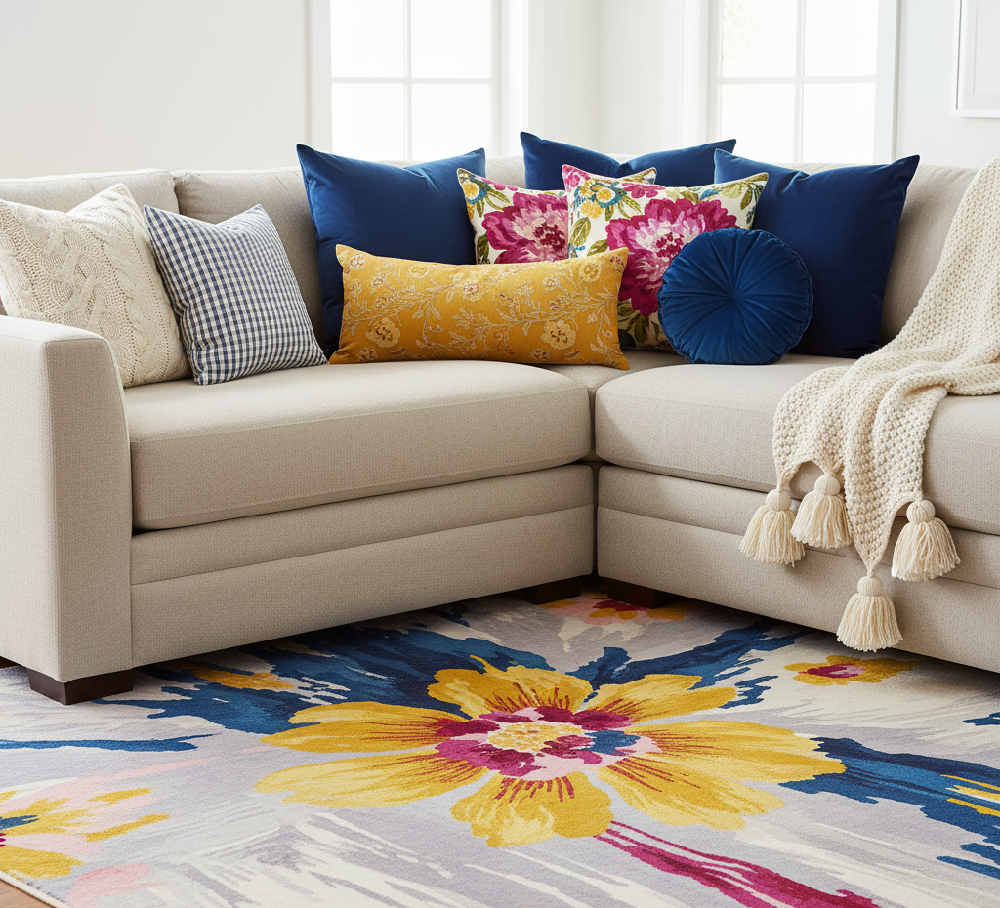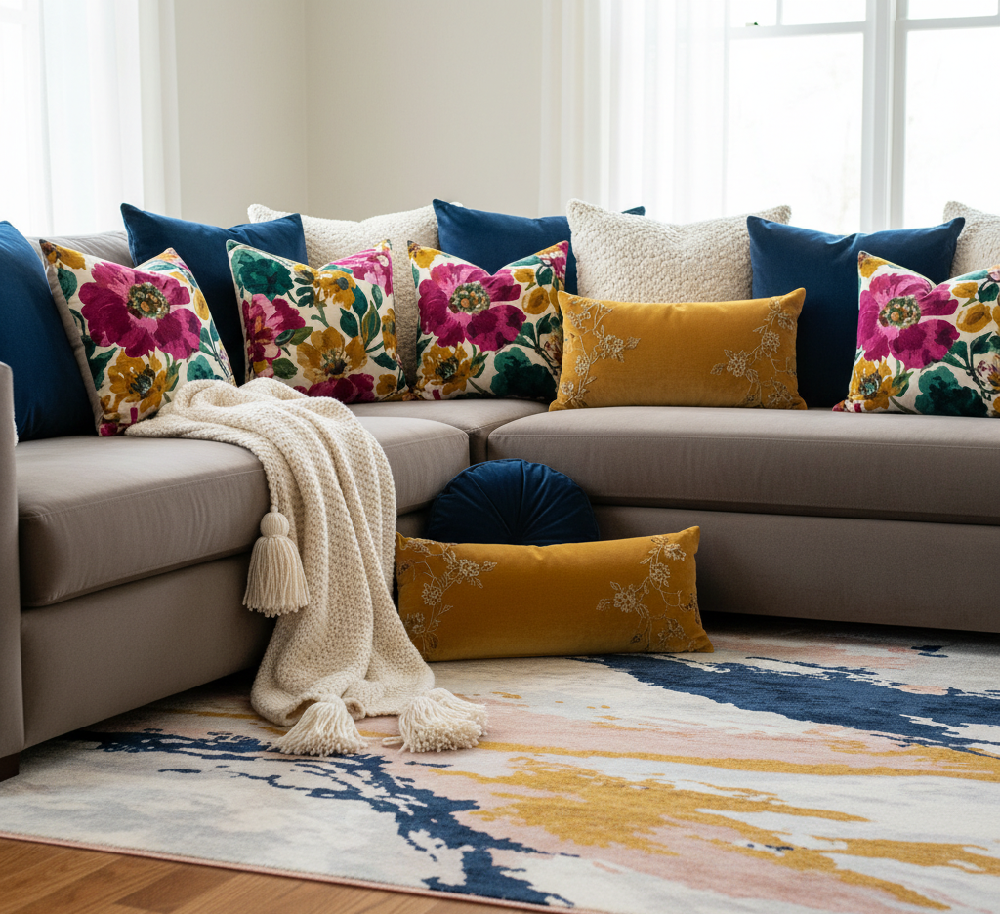The Art of the Layered Sofa: A Designer's Comprehensive Guide to Creating a Plush, Curated Seating Oasis 🛋️
Transforming a simple sofa into the inviting, high-impact focal point of your living room doesn't require a major renovation. The secret lies in masterful cushion styling. More than mere accessories, these plush elements are the ultimate finishing touch, introducing essential color, tactile depth, and personal flair that elevate your entire space. Achieving that professional, magazine-worthy finish is a systematic process that moves past surface-level aesthetics, focusing on quality, architectural arrangement, and sophisticated textile curation.
1. The Underrated Foundation: Prioritizing Insert Quality and Comfort
Before you even consider color or pattern, the structural integrity of your decorative pillows must be optimized. The single most critical determinant of a cushion's visual appeal and luxurious feel is the quality of the internal pillow insert. This is what dictates whether your sofa appears invitingly plump or sadly flat.
The Crucial Role of the Interior Structure
A high-end decorative cushion's superior look is largely influenced by what's on the inside. Inserts must be carefully selected based on the desired aesthetic and function of your seating area.
Feather vs. Synthetic Fill: The Designer's Preference
Interior design experts overwhelmingly favor natural fillings, particularly feather or feather-down blends. This is due to their luxurious, conforming feel and their superior ability to retain a full, soft shape.
-
Feather-Down for Plushness: Inserts with a blend (often 95% feather and 5% down) offer supreme plushness. The soft, fluffy down component allows the pillow to "self-plump," meaning it effortlessly regains its volume after compression. This is what enables the desirable "karate chop" indentation—the hallmark of a properly styled, high-end pillow—ensuring a full shape rather than a saggy one. Furthermore, natural fills grip better, staying put on slippery surfaces like leather furniture.
-
Synthetic for Structure: Polyfill (polyester) alternatives are more economical and maintain a firmer, more rigid shape. While this structure is excellent for providing structured lower back support, especially on deep-seated sofas, synthetic fillings generally result in a flatter, less luxurious overall appearance. For long-term style and comfort, allocate a larger portion of your budget to durable, high-quality feather-down inserts.
HOW TO CLEAN LEATHER COUCH. Get the expert guide to deep cleaning, conditioning, and 100% odor removal. Your sofa deserves it!
The Golden Sizing Secret for a High-End Look
To ensure your accent cushions achieve a gorgeously plush, well-tailored appearance and never look limp or deflated, the internal insert must always be intentionally oversized relative to the cushion cover.
The professional standard dictates sizing up the insert by 2 to 4 inches compared to the cover dimension. For example, a cover measuring 20 inches square requires a 22-inch or even a 24-inch insert. This attention to a snug fit ensures the fabric is taut and the center is adequately filled, instantly elevating the aesthetic.
2. Mastering Proportion: Size, Shape, and Dynamic Layering
Successful sofa styling is an architectural exercise concerning quantity and scale. The goal is to create visual complexity and depth that perfectly fits your sofa's dimensions.

The Psychology and Geometry of Quantity
The quantity of cushions used immediately sets the tone—signaling either relaxation or formality.
Embracing the Rule of Odd Numbers
Design principles widely favor odd numbers (such as 3, 5, or 7) for throw pillow groupings. Why? Odd-numbered clusters naturally create a more dynamic, visually appealing arrangement. This slight asymmetry encourages the eye to move across the composition, lending a modern, casual, and relaxed vibe.
-
For a standard three-seater couch, three or five cushions are typically recommended. The general maximum guideline is to use no more than one cushion per seat section to prevent overcrowding and maintain essential functionality.
-
Conversely, even numbers (4 or 6) create strict symmetry, signaling a traditional, formal, and structured aesthetic, which is ideal for a polished look.
Layering for Depth: The Three-Layer Formula
A flat, monotonous arrangement results from using cushions all in the same size. Professional styling mandates using tiered sizing to build a plush, multi-dimensional display that truly invites lounging.
The most effective formula utilizes three different sizes, often varying by 2-inch increments:
-
Back Layer (The Anchor): These are the largest square pillows (typically 22 to 24 inches, or up to 26 inches for substantial sectionals). They are placed at the back corners, establishing the foundational height and scale. These should be proportional to the sofa and should not overwhelm the height of the fixed back cushions.
-
Middle Layer (The Transition): These are slightly smaller square pieces (18 to 20 inches) positioned in front of the anchors, serving as visual transition elements.
-
Front Layer (The Accent): The smallest pieces, such as rectangular lumbar cushions or round pillows, are placed in the foreground. These provide necessary variation and often offer targeted ergonomic support.
Strategic Shapes to Break the Monotony
Mixing shapes is essential to interrupt the visual uniformity of squares. Rectangular lumbar pillows (e.g., $12" \times 20"$ or $14" \times 24"$) are particularly effective for lower back comfort while adding an element of sophisticated variation. Round pillows are perfect for softening the strong angular lines often found in contemporary or large sectional sofas.
Our new guide reveals 3 easy methods to make any couch taller, even those without legs! Say goodbye to low-rider seating.
3. The Aesthetic Framework: Curating Color, Pattern, and Texture
Once the appropriate sizes and quantities are determined, the focus shifts to curating textiles that build contrast and achieve visual harmony with the room’s existing décor.
Establishing a Cohesive Color Palette
A successful pillow grouping is always based on a cohesive color scheme that is not chosen in isolation. It must draw its inspiration and accent colors from the largest existing elements in the room.
Finding Your Color Thread
The most reliable starting points are the room’s dominant textiles, such as your area rug, or a large piece of artwork. A professional strategy involves selecting two or three accent colors already present in a primary patterned piece (like a rug) and mirroring those specific tones in your chosen cushions. This technique guarantees immediate coordination and cohesion.

From thrones of power to your cozy living room: Dive into the fascinating evolution of the sofa! 🛋️Discover the hidden history of your favorite couch in our latest blog post!
